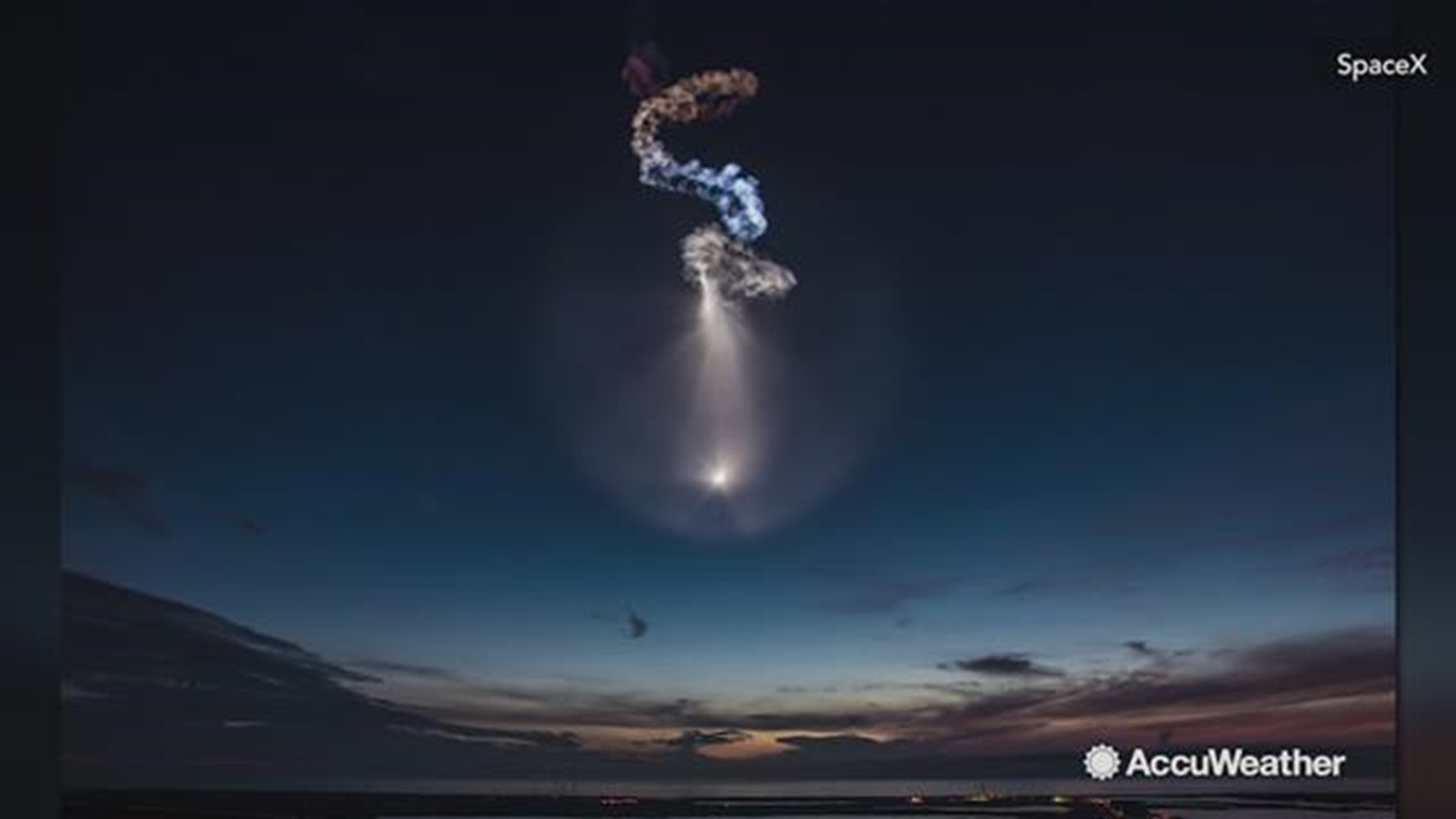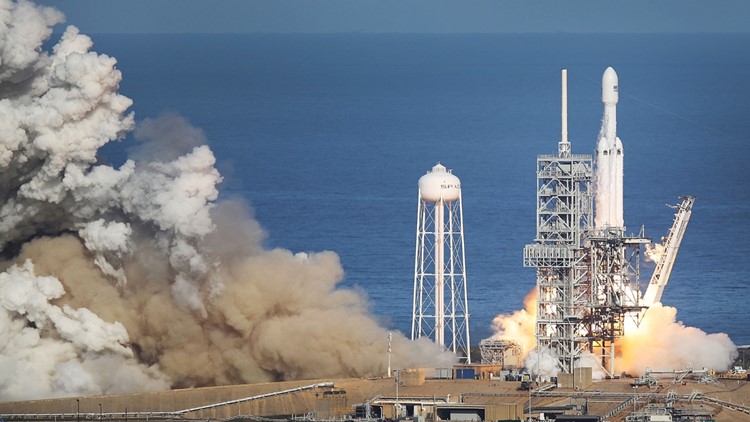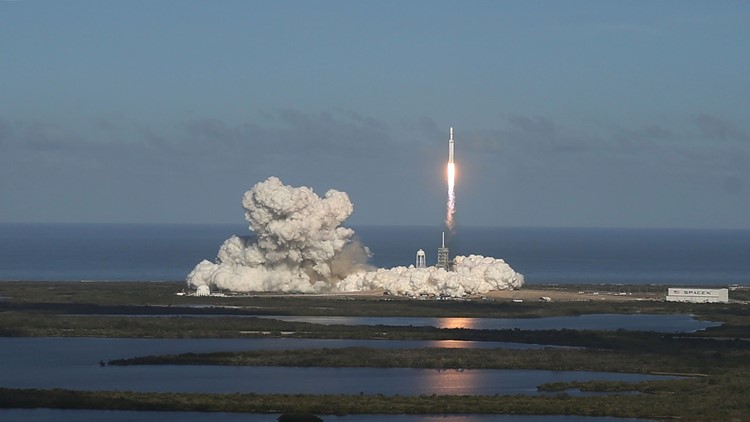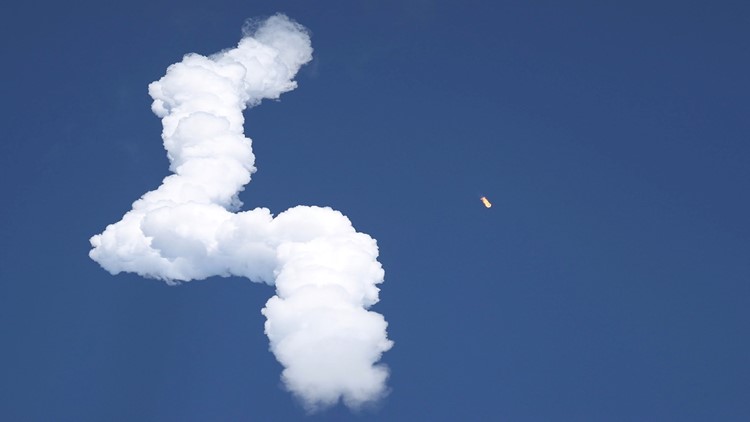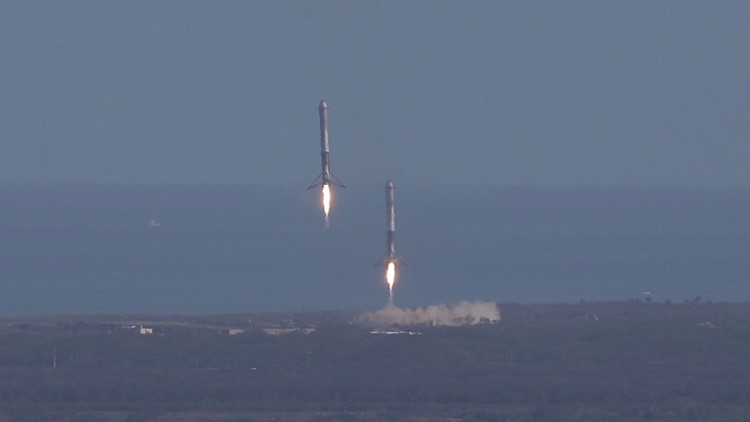SpaceX’s quest to drive down launch costs and increase access to space will continue in the early morning darkness of Sunday when an upgraded Falcon 9 rocket vaults a commercial communications satellite from Cape Canaveral, then flips around to perform an automated return landing on a ship in the Atlantic Ocean.
If schedules hold, the California company’s newest version of the nine-engine Falcon 9, known as Block 5, will take flight on its second-ever mission from Cape Canaveral Air Force Station’s Launch Complex 40 sometime during a launch window that opens at 1:50 a.m. and closes at 5:50 a.m.
On board: Telstar 19 VANTAGE, a communications spacecraft operated by Canada-based Telesat and built in California that will focus on the Americas with high-speed broadband and other services. Falcon 9 will launch the 15,600-pound satellite into a geostationary transfer orbit, meaning the spacecraft will use its own propulsion to reach its final, fixed position thousands of miles above the equator.
Launching a second Block 5 Falcon 9, which is the final version of the rocket, brings California-based SpaceX closer to its ultimate goal: transporting the people and equipment necessary to build a self-sustaining civilization on Mars. Company CEO Elon Musk believes rocket reusability – landing boosters, the most expensive parts of rockets that contain engines, and re-flying them – will ultimately pave the way to increase launch cadence, lower costs and bring SpaceX at least some of the revenue necessary for its red planet ambitions.
SpaceX has three computer-controlled booster options after any launch that kick off the reusability process:
– If enough fuel is left over, the mission profile can call for a Return To Landing Site, or RTLS, meaning the booster will automatically find its way back home and land just a few miles away from where it lifted off. To date, SpaceX has only conducted land landings at Cape Canaveral, but future coastal landings are expected at Vandenberg Air Force Base in California this year.
– If less fuel is left over, teams can meet the booster “halfway” from its launch site and its separation from the rocket’s second stage: the ocean. The company operates two drone ships, Of Course I Still Love You for the East Coast and Just Read the Instructions for the West Coast, that give the boosters a home before they can be returned to a nearby port. A third drone ship, named A Shortfall of Gravitas, is being built for East Coast use.
– If nearly all the fuel is expended and the rocket doesn’t have enough to make it back to land or a drone ship, SpaceX conducts what’s known as an “expendable” mission. After separation from the second stage and spacecraft, the booster will be discarded into either the Atlantic or Pacific oceans.
Musk is targeting 10 flights of Block 5s with little to no refurbishment between missions, but the rocket will be capable of up to 100 flights with moderate work, meaning SpaceX will likely only need to operate 30 to 40 boosters for the next several years as its next-generation rocket is developed.
“The key to Block 5 is that it’s designed to do 10 or more flights with no scheduled refurbishments between flight,” Musk told reporters in May. “The only thing that needs to change is to reload propellant and fly again.”
SpaceX increasing its flight availability, however, won’t be an issue – the company has a backlog of dozens of spacecraft, ranging from commercial to national defense, that need launching. Historically, satellite operators have hit a bottleneck after their spacecraft were already built and would have to wait months or years for rockets to become available.
Clocking in at around $50 million per launch, or about $10 million cheaper than the previous version of Falcon 9, Block 5s should help the company increase its cadence as it transitions to the Big Falcon Rocket, or BFR. The massive moon and Mars-bound vehicles currently under development are planned to be multitudes more powerful and more than 100 feet taller than Falcon 9, which usually stands about 230 feet tall on the launch pad.
Photos: SpaceX launches Falcon Heavy rocket, sticks 2 landings
"This will be the last major version of Falcon 9 before BFR," Musk said, later noting that BFR will be built at the Port of Los Angeles in California before being transported to Florida’s Space Coast. "Expect this to be a mainstay of SpaceX's business."
Block 5’s ambitions, though, don’t stop there: After several flights with the upgrades, NASA is expected to certify the rocket to fly crews from U.S. soil to the International Space Station, a feat not accomplished since the space shuttle program ended exactly seven years ago. But before that, SpaceX must launch its Crew Dragon capsule without astronauts on an automated demonstration mission to the ISS and bring it back for a safe Pacific Ocean splashdown. Demonstration Mission-1 is expected as soon as August, while the first crewed mission could happen as soon as late this year or early next year.
Boeing, also selected under NASA’s $6.8 billion Commercial Crew Program for taking astronauts to the ISS, must also demonstrate the safety of its Starliner spacecraft with uncrewed and crewed demonstration flights before full certification.
For Sunday’s launch, meanwhile, weather forecasters with the Air Force’s 45th Weather Squadron based at Patrick Air Force Base anticipate that cumulus and thick clouds could linger over Cape Canaveral during the window, meaning conditions will likely be 60 percent “go” for liftoff. The long window will work in SpaceX’s favor – teams can use those four hours to launch during a break in the cloud cover.

